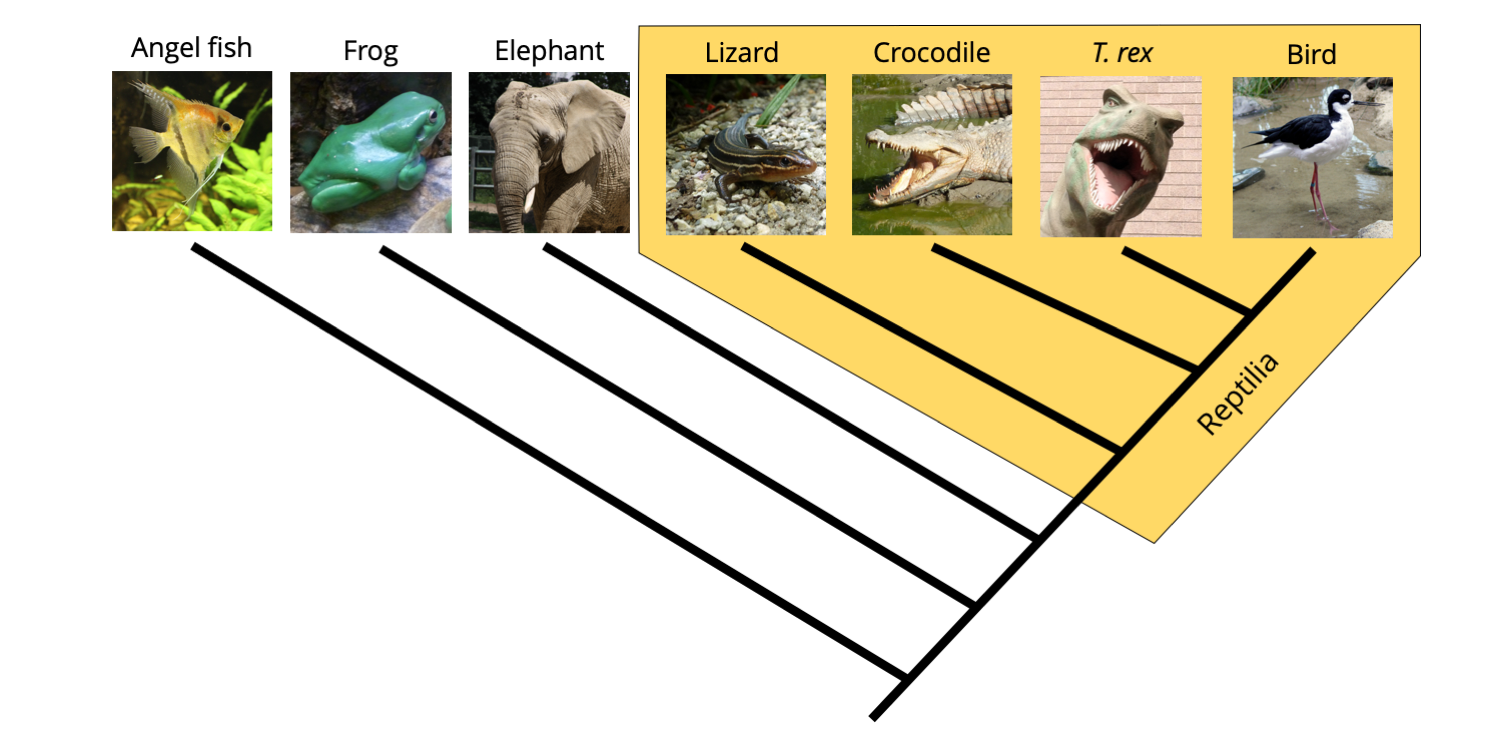Clades
Groups that include a common ancestor and all descendants
- A clade is a group of organisms that includes:
- A common ancestor.
- All its descendants (living and extinct).
- Clades can vary in size, from small groups with few species to vast ones encompassing millions.
Clades are like branches on a tree:
- The tree trunk represents the shared ancestry of all life.
- Branches represent clades, with smaller twigs nested within larger branches, reflecting evolutionary splits.

- The clade of mammals includes humans, whales, and bats, all descended from a common mammalian ancestor.
- The clade of flowering plants covers a diverse array of species, from roses to oak trees.
How Are Clades Identified?
1. Molecular Evidence: The Genetic Blueprint
- The strongest evidence comes from DNA base sequences and amino acid sequences in proteins.
- The more similar the sequences, the more recent the common ancestor.
- As time passes, mutations accumulate, leading to differences in sequences.
Humans and chimpanzees share about 98-99% of their DNA, placing them in a closely related clade within primates.
2. Morphological Evidence: Traits and Structures
- In fossils or extinct organisms, DNA may not be available, so scientists rely on morphological traits.



